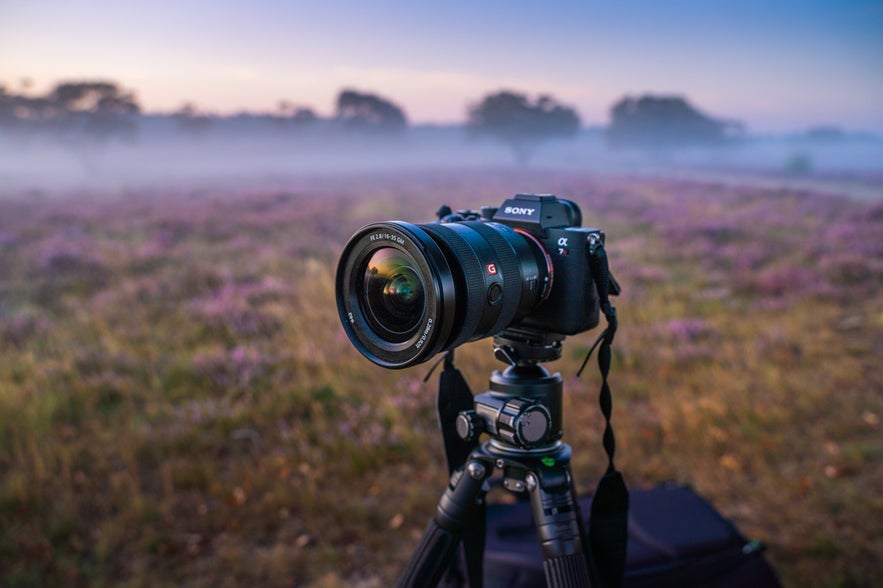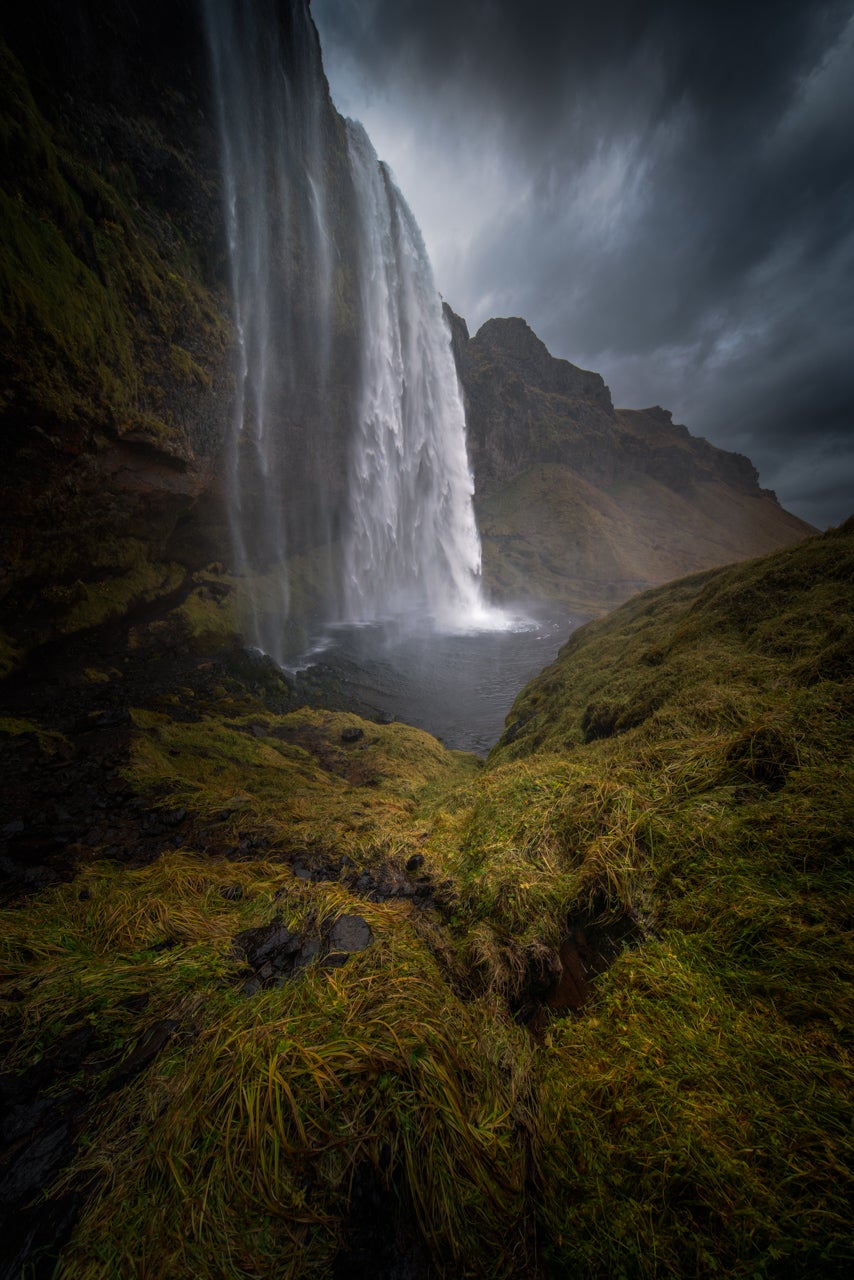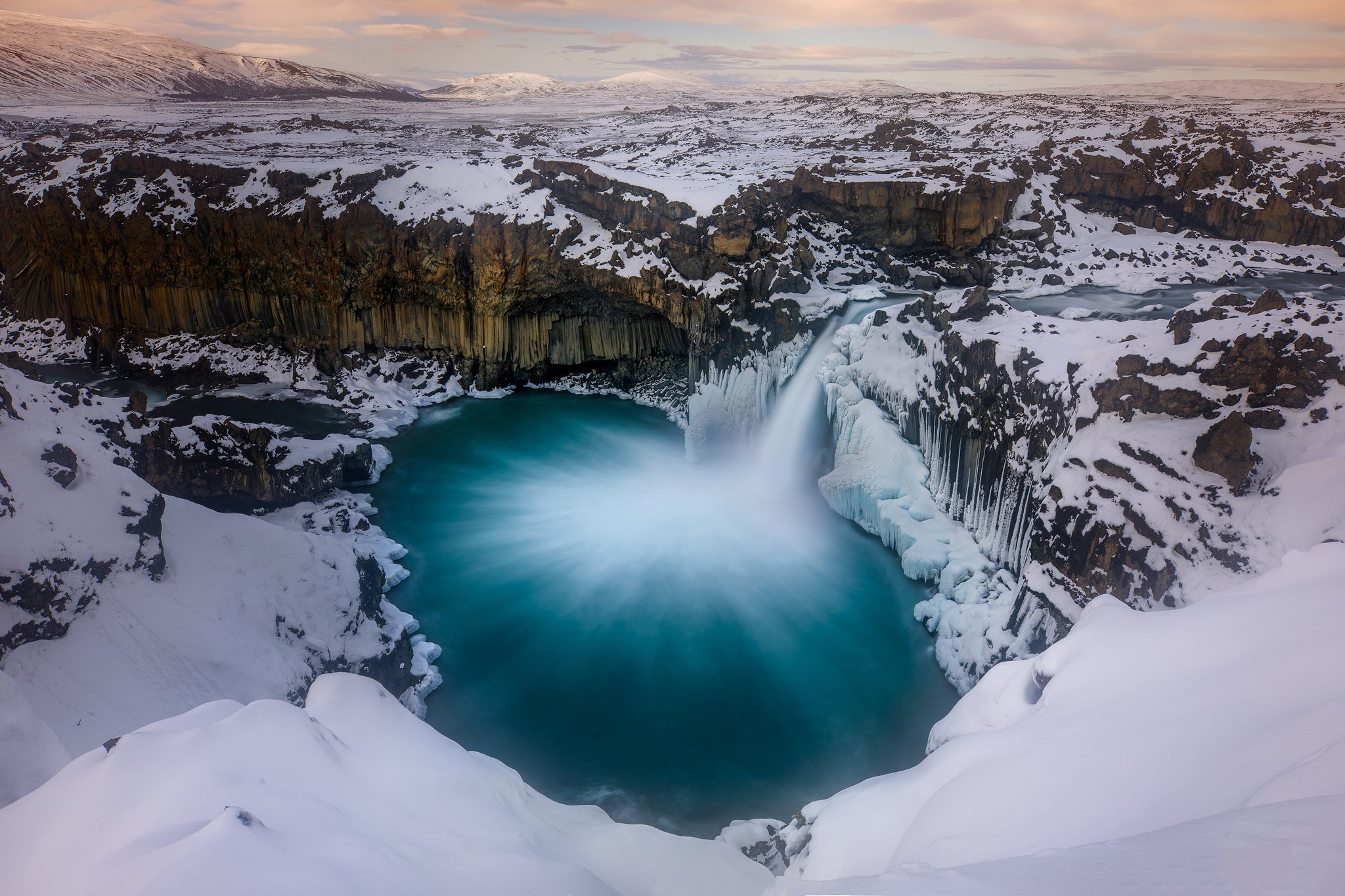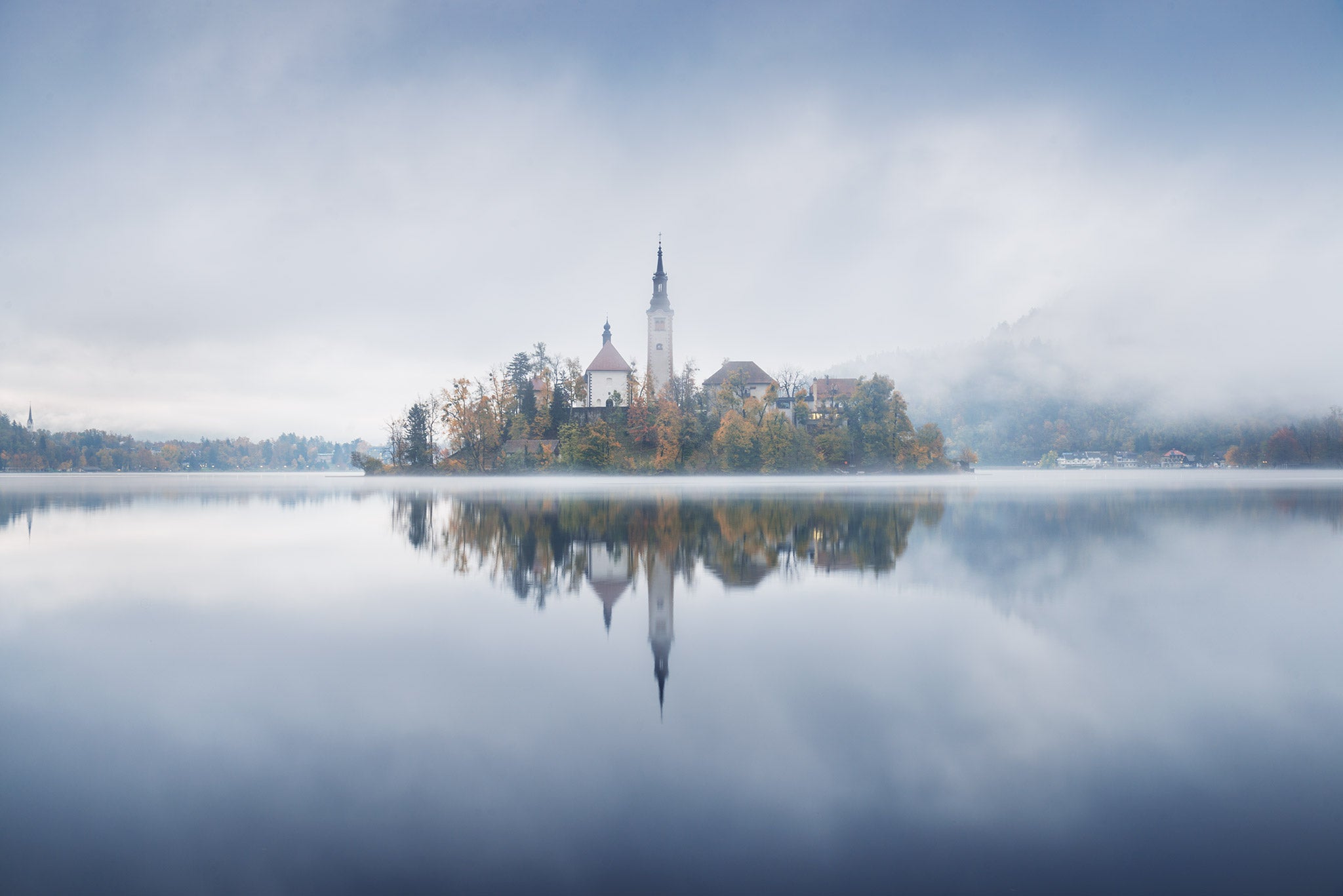
Sony cameras are popular these days. More and more people switch, or are thinking of switching from their traditional DSLR to a mirrorless system, often choosing Sony. Weight, portability, technology and innovation are the most common reasons for people to choose a mirrorless over a traditional DSLR camera.
- Check out these Camera and Gear Reviews
- See these 5 Key Reasons to Use a Wide Angle Lens in Iceland
I still remember when I was using the first Sony A7 camera. People were very sceptical, mainly because there were almost no lenses available for the system. Now, six years later, it's an entirely different story. There are dozens of options and in this article, I'll be discussing the different options regarding Sony lenses for landscape photography, with a focus on the Sony E-mount full frame system without having to use adapters.
This guide is very general to show you what lenses are available to give you an overview and recommendations.
Sony Wide Angle Lenses
Most of the wide angle lenses in this list are zoom lenses. Zoom lenses are very comfortable for landscape photography because you can quickly make adjustments to your composition by zooming.
There are also photographers who prefer primes to zoom lenses in regards to landscape photography. Prime lenses often offer more sharpness. However, these days the zoom lenses are of such high quality that the sharpness often does not differ to an extreme amount.
Sony Zeiss 16-35 f/4
This is one of the oldest wide angle lenses for the Sony E-mount system and is still a good choice. The Sony Zeiss (aka 'Zony') was about the only wide angle lens of choice back in the days and it was a great one.
The sharpness along with its good build quality is still very appealing and the bang for buck is great on this one. You may also be able to pick this up in the ‘used’ category.
If you can find one for a good price, go for it. Another nice property of this lens is the ‘sunstar’ that it produces. When photographing into the sun, this lens has a very distinctive sunstar that you can recognise immediately over every other lens. I think it's beautiful, but that’s subjective, of course.
 The 16-35 f/4 Zony has a very distinctive sunstar. Photo by: 'Albert Dros'.
The 16-35 f/4 Zony has a very distinctive sunstar. Photo by: 'Albert Dros'.
 16mm on the Sony A7RII. Photo by: 'Albert Dros'.
16mm on the Sony A7RII. Photo by: 'Albert Dros'.
Sony 16-35 f/2.8 GM
This is the 'King' of wide angle lenses for the Sony e-mount system. If you have to pick one lens to use for landscape photography, this would be the one (at least for me).
With its versatile range and fast aperture, you’ll be able to handle almost every wide angle landscape thrown at you.
This lens is also known for being one of the sharpest zoom lenses on the market, so you’ll be sure your shots are of great sharpness on any Sony E-mount camera, especially the high megapixel ones like the A7RII, III and IV. The lens is also of great build quality and has a nice sunstar to it. The only ‘negative’ to this lens is that it’s the most expensive of all the choices. But if you can afford it, go for it.
 35mm on the Sony A7RIII. Photo by: 'Albert Dros'.
35mm on the Sony A7RIII. Photo by: 'Albert Dros'.
Sony 12-24 f/4 G
This is the widest Sony zoom lens (if we’re not thinking of third party brands). This lens is THE choice if you love to shoot extremely wide.
Shooting wider than 16mm can give you some beautiful perspectives. When shooting at 12mm, foregrounds become huge. You definitely have to learn how to photograph with extremely wide lenses, but if you like going wide, this lens is the lens for you. The price of this lens is very affordable. It’s made of plastic but still feels solid. And it’s light.
Because of the rather ‘slow’ aperture of f/4, this lens is not that big and is great to fit in your bag. The image quality of this lens is good, but not amazing. Obviously, the GM lenses beat this lens in sharpness, but if you want to shoot super wide then this lens is a great choice.
I have used this lens for lots of landscapes purely because I love the 12-24mm range. One of the negative aspects of this lens is that you can’t use ‘normal’ filters on it. It doesn’t have a screw thread and you can’t attach 100mm square filters. You will have to buy a separate holder and use 150mm+ filters.
 A disadvantage of the 12-24G lens is that you need a big filter system for it. Photo by: 'Albert Dros'.
A disadvantage of the 12-24G lens is that you need a big filter system for it. Photo by: 'Albert Dros'.
 12mm on the Sony A7RIII. A wide lens lets you get a strong foreground because of the extreme perspective. Photo by: 'Albert Dros'.
12mm on the Sony A7RIII. A wide lens lets you get a strong foreground because of the extreme perspective. Photo by: 'Albert Dros'.
Third Party Lenses
Laowa 10-18mm f/4.5-5.6 e-mount
The Laowa 10-18mm is a very small, wide and well-priced lens. This lens is manual and with its good sunstar, it's a nice option if you’re interested in shooting even wider than 12mm.
This lens is not one of the sharpest and is recommended to use on the Sony e-mount bodies that don’t have the highest megapixel count, such as the A7, A7II or A7III. On higher megapixel bodies, you’ll notice that this lens is less sharp than the Sony choices, but it’s also the price you'll have to pay for using a lens that is so wide.
In the end, it’s about the photos you can make with this tool. A big advantage of this lens is that you can use 100mm filters on it!
|
|
|
Both shot at 10mm, this focal length allows you to capture a lot of space and can give you amazing perspectives. Photo by: 'Albert Dros'.
The Best Sony E-Mount Lenses for Night Photography
The Sony 16-35 f/2.8 GM is great for night photography but if you don’t have this lens, there are a couple of good options for shooting the Milky Way or the Aurora.
The most budget option is the Samyang 14mm f/2.8, the ‘old’ manual version (there is also a new Sony E-mount version with autofocus, but it’s not that sharp at f/2.8). If you don’t have a fast wide angle lens and you’re on a budget, this is the lens to get. It’s surprisingly sharp (if you get a good copy, because quality control is a thing with this particular lens).
 Milky way panorama in the Netherlands with the Samyang 14mm f/2.8 on the Sony A7RII. Photo by: 'Albert Dros'.
Milky way panorama in the Netherlands with the Samyang 14mm f/2.8 on the Sony A7RII. Photo by: 'Albert Dros'.
Another good option is the Laowa 15mm f/2. It’s one of the fastest extreme wide angle lenses on the market and delivers good quality wide open.
 Laowa 15mm f/2 on the Sony A7RIII. Photo by: 'Albert Dros'.
Laowa 15mm f/2 on the Sony A7RIII. Photo by: 'Albert Dros'.
If you want to go even wider, the Samyang 12mm f/2.8 fisheye is the widest you can get with a decently fast aperture. But it’s of course a fisheye. There is software available like IMADIO fisheye that can easily correct distortion, leaving you with an extremely wide image. This can be great for capturing a big Aurora storm or the arch of the Milky Way in a single image.
Other Choices
There are currently so many brands creating lenses for the Sony E-mount system that it’s hard to keep up. The brand new Sony 14-24 f/2.8 Sigma lens that was designed for the E-mount system is an interesting option. As there are currently not many tests out yet and I haven’t used it for more than a few days, it’s hard to currently say how good this lens performs.
Another interesting wide angle zoom option is the Tamron 17-28 f/2.8. This lens is very light and sharp but lacks range on both ends. It's a compromise but not a bad choice at all.
Other choices regarding prime lenses in the wide angle category are the Zeiss Batis (mainly the 18mm f/2.8 and 25mm f/2) and the Voigtlander primes (10, 12 and 15mm).
Which Wide Angle Lens Should I Purchase?
This depends on your shooting style. Do you love shooting extremely wide? Then get the 12-24mm Sony or 10-18mm Laowa lenses. But they’re both not too fast, so you will have to get an extra prime of you want to shoot nightscapes.
If you’re on a budget, then get the Samyang 14mm f/2.8, otherwise get the Laowa 15mm f/2.
If you like the 16-35mm range, then I would recommend getting the 16-35mm f/2.8 GM if you can afford it. The cheaper alternative is the Sigma 14-24mm f/2.8 or Tamron 17-28mm f/2.8. With these lenses, you'll also be set for shooting Milky Way or Aurora photography.
Mid Range
To me, the mid range zoom lens is less important. If I would have to recommend two lenses, I would suggest that you get a wide angle zoom and a telezoom lens.
However, some photographers absolutely love the 24-70mm range and shoot with it all the time. These are some good options when looking at the mid-range:
Sony 24-70 f/2.8 GM
The G-Master mid range zoom offers great image quality, good sunstar, good build quality and is overall one of the top choices for this range. The negative side is that this lens has a high price.
 Sony 24-70 GM on the Sony A7RIV. Photo by: 'Albert Dros'.
Sony 24-70 GM on the Sony A7RIV. Photo by: 'Albert Dros'.
Sony 24-105 f/4
Rather than recommending the 24-70mm f/4, the Sony 24-105mm G is the better choice here. This lens offers a little bit more range and has great sharpness. Of course it’s a little bit slower than the GM so it’s not great to shoot with at night. If you don’t want to spend 2500 Euro on the GM, then this lens is a great alternative as its price is much lower.
Sony 24 f/1.4GM
Ok, this lens doesn’t really fit in here with all the zooms, but it's a lens that can’t be considered extremely wide, though it also is not really midrange.
I’m including this lens in this article because it’s one of those lenses that you will just love when you’ve used it.
It’s a prime but it’s an extremely good prime! It’s super light weight, fast, and offers extremely good image quality. The 24mm is great as an all-rounder focal length and with an aperture of f/1.4, it is extremely versatile. It's also so light that you can always put it in your bag.
This lens is great to capture an Aurora or Milky Way (but you often have to pano). You can also shoot some wide angle portraits with it and very creatively use it for foreground bokeh at its super fast aperture of f/1.4.
This lens offers great uses with its limited focal length.
 Creative use of the 24mm f/1.4 on the Sony A7RIII. Photo by: 'Albert Dros'.
Creative use of the 24mm f/1.4 on the Sony A7RIII. Photo by: 'Albert Dros'.
Tamron 28-75 f/2.8
Another great option for this range is the Tamron 28-75mm f/2.8. It’s sharp but lacks a tiny bit of sharpness in the edges compared to the other lenses on open apertures. However, its centre sharpness is on par with the 24-70mm f/2.8 GM.
This lens lacks some range on the wider end but because of this, it is much lighter and smaller than the G-Master. But the biggest advantage comes with its price. This lens is priced at only 800 Euro, so it’s a great choice if you’re on a budget.
 Tamron 28-75 f/2.8 on the Sony A7RIII. Photo by: 'Albert Dros'.
Tamron 28-75 f/2.8 on the Sony A7RIII. Photo by: 'Albert Dros'.
Tele-Zooms
Photographing landscapes with tele zooms is a challenge but if executed correctly, you can get some great results. They’re used for many aspects. Think of compressing hills, roads or photographing a single tree in the distance.
A good telezoom is absolutely necessary for some great landscape photographs.
Sony 70-200 f/4
This lens was one of the first zoom lenses for the Sony E-mount and it’s still a good choice. It’s relatively sharp and is also quite light compared to the G-master. If you care about your budget and want to bring your zoom lens on long hikes, this lens might be a good choice for you.
Sony 70-200 f/2.8 GM
This lens is heavier and more expensive than the f/4, but the image quality shows. It is very sharp and if you love the 70-200 range, then this is the top choice to get. This lens is also great for portraits as its bokeh is beautifully soft and dreamy, so if you take a portrait from time to time, then by all means go for this lens.
Sony 70-300 f/4.5-5.6
This lens is a good allrounder zoom but not one of the sharpest. It’s a good travel lens that offers decent results. On higher megapixel cameras like the Sony RIII and RIV, it underperforms compared to the GM lenses.
A good advantage of this lens is its range, price and that it is relatively light.
If you’re looking for a good travel zoom, this lens or the 70-200 f/4 are a good choice.
 A dramatic frame of a distant peak in Iceland, shot at 300mm with the 70-300 on the Sony A7RIII. Photo by: 'Albert Dros'.
A dramatic frame of a distant peak in Iceland, shot at 300mm with the 70-300 on the Sony A7RIII. Photo by: 'Albert Dros'.
Sony 100-400 f/4.5-5.6 GM
The 100-400 GM is one of the sharpest tele zooms on the market. It’s much slower than the 70-200 GM but it’s also lighter and the image quality even at 400mm is absolutely great.
The bokeh of this lens is smooth. It’s similarly priced to the 70-200 GM, so if you’re looking around this budget you will have to choose between this the 100-400GM and the 70-200GM.
 A distant eagle on the mountain tops in Kyrgyzstan, shot at 400mm with the 100-400 on the Sony A7RIII. Photo by: 'Albert Dros'.
A distant eagle on the mountain tops in Kyrgyzstan, shot at 400mm with the 100-400 on the Sony A7RIII. Photo by: 'Albert Dros'.
Overall, Which Lenses Should I Get?
This depends on your shooting style. If you like hiking, then it’s obvious that you should get the lightest lens. The image quality of the 100-400GM along with the weight is acceptable for many people to carry along during hikes. If I would have to recommend a telezoom lens, then it would be this one.
However, if you know that you’re not going to use the long end of a zoom, then the 70-200GM might be perfectly fine for you, especially if you love taking portraits from time to time.
If you’re on a budget and you’re looking for a good zoom lens to travel, the 70-200 f/4 or 70-300 are good as well. They’re all good lenses. One thing to note is that the tele-extenders only work on the GM lenses.
What About a Whole Lens Kit?
Currently, for landscape photography there are great options for the Sony E-mount. We've already discussed the best choices available. If we’re looking at a complete kit for landscape photography, then we usually need:
-
1 wide lens
-
1 mid-range zoom
-
1 tele-zoom lens
-
Optional fast prime lens for Milky Way and Aurora photography
It all depends on your budget and style (how wide do you want to go) as to which kit would be the best for you. I myself use the following:
-
Wide: 12-24G or the 16-35GM
-
Mid: 24-70GM
-
Tele: 100-400GM
-
Extra: 24GM for creative bokeh and night shots.
-
Optional: 15mm f/2 Laowa for Milky Way or Aurora.
Some great whole lens kits for the Sony E-mount cameras include the Sony 12-24G, 24-205G and 100-400GM. Or if you want to go the more classic route, get the Sony 16-35GM, 24-70GM, 70-200GM.
But if you’re on a budget you could also go with the Tamron line up: 17-28 f/2.8, 28-75 f/2.8 and Tamron will probably release a 75-210 later this year (2019).
It’s great that we currently have so many choices and will get even more in the future. I hope that you have enjoyed this article and that it helps you to make your choice regarding lenses for the Sony E-mount system!
About the author: Albert Dros is a landscape photographer based in the Netherlands. You can find more of his work on his website or by following him on Facebook and Instagram.
Dust your camera off and learn photography in your dream destination! Check out our photography workshops and tours that will have you developing your skills in-field in no time!














